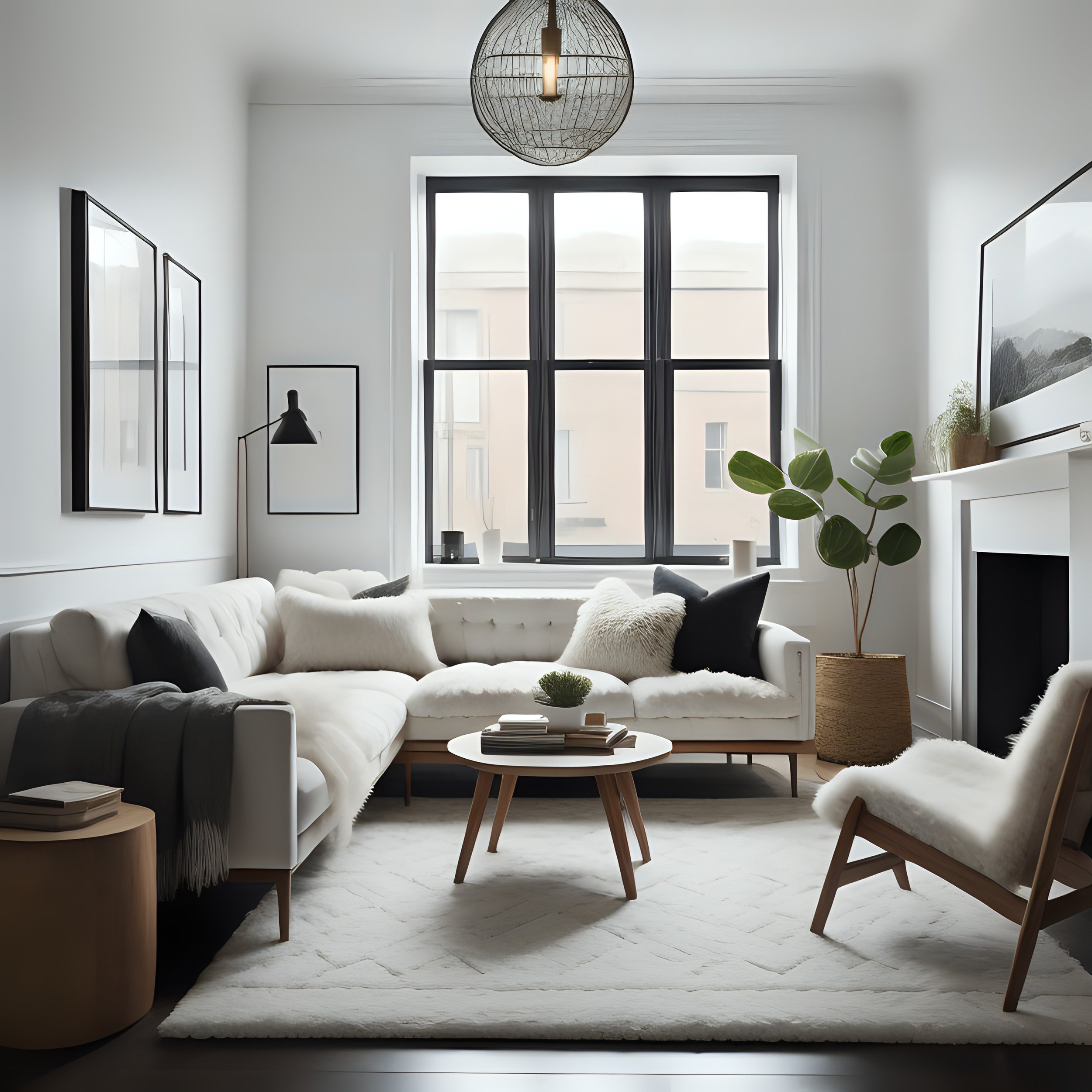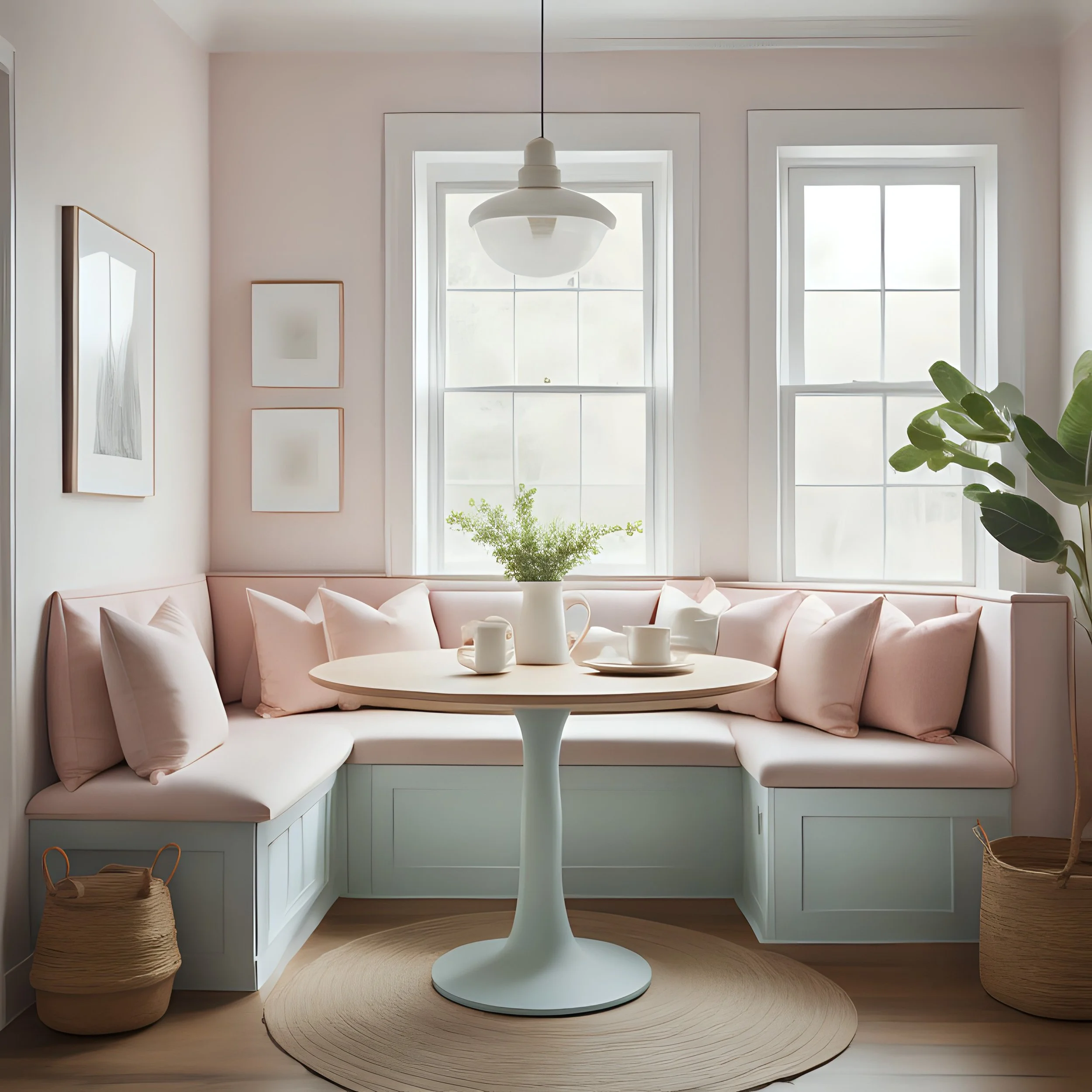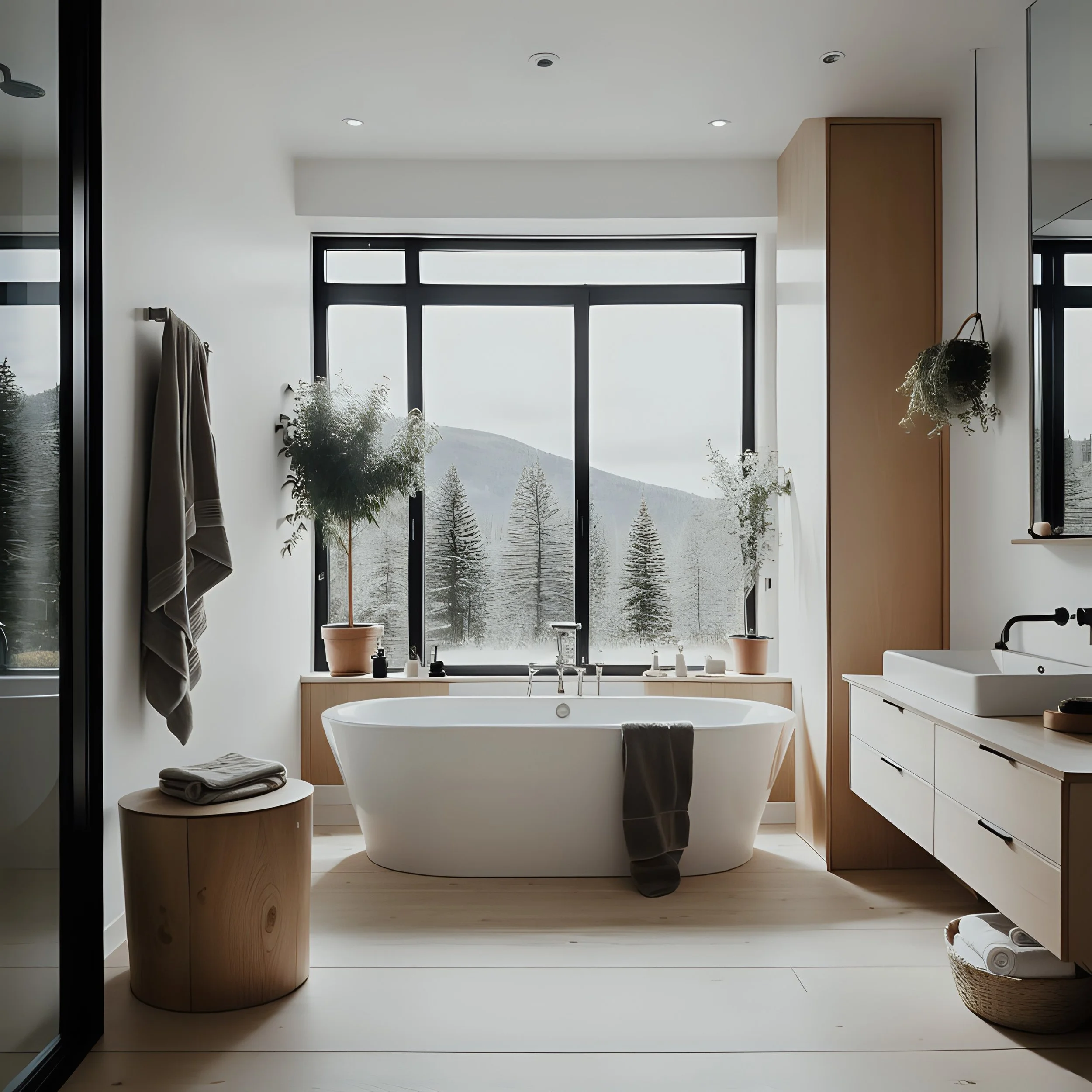Decoding Scandinavian Design: History, Colors, and Home Spaces
Unveiling the Magic of Scandinavian Design
Step into a world where simplicity blends seamlessly with elegance, where functionality is key, and your living space narrates timeless tales of allure—welcome to the realm of Scandinavian design.
Discover cozy interiors that wrap you in warmth on a frosty morning, furniture that's not just stylish but also cleverly practical, and a color palette that soothes like a breath of fresh, crisp air. This is the magic of Scandinavian design—a philosophy that turns ordinary spaces into sanctuaries of art.
Emerging in the early 20th century amidst a backdrop of change, Scandinavian design embodies more than just a style—it's a lifestyle. Originating primarily from Nordic countries—Denmark, Norway, Sweden, Finland, and Iceland—this design ethos strikes a delicate balance between modern sophistication and comforting snugness.
It's about celebrating simplicity in an extraordinary way—embracing clean lines and uncluttered spaces while incorporating nature's wonders, snuggling up with a warm throw on a stylishly functional chair, surrounded by elements echoing the tranquility of a serene forest—a perfect blend of sophistication and down-to-earth charm.
But this isn't merely about appearances—it's the harmonious fusion of form and function! Scandinavian design proudly displays the beauty of natural materials—inviting wood, comforting textiles, and finishes that exude understated luxury. And let's not forget the color palette—serene neutrals and gentle pastels with natural light, making spaces feel as open and airy as a sunlit meadow.
Consider it a design journey led by visionaries like Arne Jacobsen, Alvar Aalto, and Hans Wegner—architectural pioneers who not only created iconic pieces but also set high standards for functionality and comfort. Their designs spoke a language of timeless elegance and a deep understanding of human-centric spaces—a language universally cherished.
Scandinavian design transcends borders; it's a sensation, a vibe inviting everyone to revel in its charm. It's the art of transforming houses into homes—spaces where every nook tells a tale of comfort, where aesthetics meet practicality, and where simplicity meets sheer beauty.
So, let’s get ready to get cozy and dig into more details of one of my favorite design styles!
Scandinavian style living room. AI generated via Imagine.
What is Scandinavian Design?
Scandinavian design isn't just a style; it's a lifestyle manifesto—a blueprint for weaving simplicity, functionality, and charm into the very fabric of everyday life; a design philosophy that's like a cozy Nordic sweater—comforting, timeless, and effortlessly stylish.
At its core, Scandinavian design is the art of striking the balance between beauty and practicality and celebrating minimalism without compromising on elegance, where form meets function with ingenuity. Think of it as a rulebook that champions clean lines, uncluttered spaces, and a harmonious connection with nature.
But here's the secret sauce—it's not just about what meets the eye; it's about how it feels. It's about the touch of warm wood under your fingertips, the embrace of soft fabrics, and the way natural light plays with space, making rooms feel alive and inviting.
Scandinavian design is all about bringing the outside in—imbuing spaces with the tranquility and freshness of the Nordic landscapes. It's a love affair with natural materials like wood, stone, and leather, grounding interiors in earthy sophistication while exuding a sense of warmth and coziness.
Now, let's talk furniture; pieces that aren't just exquisitely beautiful but actually serve a purpose beyond aesthetics. Chairs that are as comfortable as they are eye-catching, tables that invite gatherings, and lamps that cast a warm, inviting glow—each meticulously crafted to elevate your living space without compromising on practicality.
And let's not forget the magic of color! Scandinavian design revels in serene hues—whites, soft grays, and gentle pastels—that soothe the senses and create a serene ambiance. It's about adding pops of vibrant colors—a splash of mustard yellow or a touch of seafoam green—to infuse life and personality into spaces that are otherwise understated.
In a nutshell, Scandinavian design isn't just about decorating spaces; it's about curating an experience—a delightful blend of elegance, comfort, and a touch of Nordic magic that transforms houses into homes you'd never want to leave.
So, buckle up and get ready to uncover more secrets of this enchanting design philosophy—where beauty meets functionality, and simplicity reigns supreme!
Scandinavian style bedroom with vaulted ceiling. AI generated via Imagine.
Scandinavian Design History: Origins and Influences
Scandinavian design embodies a captivating blend of simplicity, functionality, and timeless elegance—a design philosophy deeply rooted in the cultural, geographical, and social aspects of the Nordic countries.
Emerging in the early 20th century, Scandinavian design was shaped by several pivotal movements, including the Arts and Crafts movement, functionalism, and modernism. This design ethos was influenced by the Nordic region's natural landscapes, with a strong emphasis on light, nature, and a harmonious relationship between form and function.
Three pioneering figures stand out in the history of Scandinavian design—Arne Jacobsen, Alvar Aalto, and Hans Wegner. These visionaries played an instrumental role in shaping the principles and aesthetics that define Scandinavian design today.
Arne Jacobsen, known for his functional yet aesthetically pleasing designs, left an indelible mark with iconic creations such as the Egg Chair and Swan Chair. His approach emphasized sleek lines and organic forms, epitomizing the marriage of form and function while also incorporating a sense of whimsy.
Alvar Aalto, a Finnish architect and designer, championed organic and human-centric designs that harmonized with nature. His emphasis on natural materials and fluid, curvilinear shapes was evident in iconic pieces like the Paimio Chair and the Savoy Vase, showcasing a deep connection between design and the environment.
Hans Wegner, often referred to as the "Master of the Chair," crafted furniture that exuded simplicity and craftsmanship. His designs, such as the Wishbone Chair and the Shell Chair, embraced clean lines and expert woodworking, encapsulating the essence of Scandinavian design's focus on understated elegance and functionality.
These influential designers not only shaped the trajectory of Scandinavian design but also left an enduring legacy, influencing generations of designers worldwide. Their innovative approaches, emphasis on functionality, and commitment to timeless aesthetics continue to inspire contemporary design trends and resonate with design enthusiasts globally.
Scandinavian design continues to evolve, maintaining its allure and relevance by staying true to its roots while adapting to modern sensibilities. Its enduring principles of simplicity, functionality, and understated elegance serve as a testament to its timeless appeal.
Scandinavian interior design material board with the color palette and finishes. AI generated via Imagine.
The Emotional Palette of Scandinavian Design: Embracing Timeless Hues
Delving into the essence of Scandinavian color schemes reveals not just a visual feast, but an emotional journey weaving together hues that form the heart and soul of design.
Within the spectrum of Scandinavian-inspired rooms, a serene emotional landscape unfolds, heavily influenced by a delicate interplay of colors. The traditional neutral tones—whites, soft grays, and muted pastels—form the cornerstone, carefully selected not only for their aesthetics but for their profound impact on the ambiance they create.
White, the quintessential canvas of Scandinavian design, embodies more than mere pigment; it embodies a feeling. Symbolic of purity, openness, and tranquility, it mirrors the allure of fresh snow—a canvas of endless possibilities that fosters a welcoming and serene ambiance. The radiant purity of white walls reflects light, imparting a sense of spaciousness and airiness, setting the stage for an inviting atmosphere.
Soft grays, nestled prominently within Scandinavian palettes, encapsulate sophistication and tranquility. These nuanced shades transcend mere color; they evoke feelings akin to a misty morning over a calm lake—gentle, balanced, and imbued with depth. Their presence adds a cozy aura without overshadowing the space, harmoniously complementing other design elements.
Amidst the understated tones, the gentle pastels—blush pinks, soothing blues, muted greens—add subtle yet impactful accents to Scandinavian interiors. These hues, like whispers of personality, infuse spaces dominated by neutrals with life and character. Rather than demanding attention, they narrate tales of warmth, tranquility, and a touch of whimsical charm.
And now, amid the evolution of Scandinavian design, black has emerged as a celebrated contender within the color palette. Its bold and timeless allure intertwines seamlessly, bringing depth and contrast to spaces, emphasizing the innate beauty of simplicity and enhancing the overall aesthetic. As a recent trend, black embodies a modern sophistication that harmonizes flawlessly with the traditional hues, promising a lasting union with Scandinavian design.
Ultimately, these colors create spaces that don't overpower but rather soothe the senses. They compose a backdrop for a lifestyle—an inviting canvas that encourages relaxation, fostering a sense of belonging and refined style.
In essence, beyond the specific color palette, it's vital to recognize the emotions evoked by hues—a tranquil sanctuary, a warm embrace, and an enduring sense of serenity—making Scandinavian design a haven of comfort and style, evolving yet timeless.
Scandinavian style breakfast nook banquette. AI generated via Imagine.
General Rooms in Scandinavian Design: Creating Serene Spaces
In Scandinavian design, general areas like the foyer, living room, dining room, home office, and bedrooms embody a unified essence characterized by clean lines, simplicity, and an overall light and airy ambiance.
Foyer: The Scandinavian approach to the foyer involves minimalism, featuring hidden shoe storage cabinets, benches, and mirrors. Utilizing a console table with stools provides functionality, allowing comfortable seating while putting shoes on or off, maximizing the space available.
Living Room: Typically furnished with a sectional sofa or a chaise, the Scandinavian living room prioritizes decluttered spaces that exude coziness and tranquility. A serene atmosphere devoid of clutter fosters a stress-free environment, emphasizing comfort and practicality.
Dining Room: Scandinavian dining spaces emphasize simplicity, openness, and an airy ambiance. Opting for lightweight wishbone chairs and minimalist light fixtures like rattan or paper, glass, and metal pendants or clean-lined chandeliers above the dining table contributes to the spacious feel. Enclosed storage through sideboards or buffet tables prevents visual clutter, maintaining the room's simplicity.
Bedroom: In the realm of Scandinavian design, bedrooms are designed to be soft, cozy, and serene retreats. Beds often sit lower than standard height, upholstered or featuring light wood tones like oak. Bedding tends to lean towards duvet covers in whites or light blue/pink hues. Enclosed storage solutions are favored to maintain a clutter-free environment, promoting relaxation and recharging.
Scandinavian design principles emphasize functionality without compromising on elegance, creating spaces that radiate calmness and serenity while offering practical solutions for daily living. Integrating these elements helps craft harmonious interiors, making every room a sanctuary of comfort and style.
Scandinavian style kitchen design. AI generated via Imagine.
Scandinavian Kitchen Design: Simplicity and Functionality
I particularly love designing kitchens and especially appreciate incorporating elements of Scandinavian style into my deisgns ensuring that the functionality of the space intertwines with elegance to create hubs of culinary creativity, comfort, efficiency and conviviality.
Within a Scandinavian kitchen, you'll find the hallmarks of the design style with clean lines, predominantly white color schemes, and a sense of spaciousness, these kitchens evoke brightness and functionality. The minimalistic approach creates a canvas that allows culinary pursuits to take center stage.
Natural wood accents and warm textures add a touch of coziness to these functional spaces. Whether it's the warmth of wooden countertops or the inviting feel of textured backsplashes, these elements infuse warmth into the room, making it an inviting space for both cooking and gathering.
Smart storage solutions, functional islands, and integrated appliances contribute to a clutter-free, functional workspace—a hallmark of Scandinavian kitchen design. It's not just about aesthetics; it's about creating a workspace that enhances efficiency and promotes a seamless cooking experience.
These kitchens are an ode to practicality without compromising on style. They reflect a lifestyle that celebrates the joy of cooking and sharing meals, embodying the essence of Scandinavian design—a perfect marriage of elegance and utility.
Scandinavian bath design. AI generated via Imagine.
Serene Oasis: Scandinavian Bathroom Design
Nestled within the Scandinavian design ethos, the bathroom transforms into a sanctuary—a place of rejuvenation and tranquility where functionality harmonizes with elegance utilizing the hallmark clean lines, subdued color palette, and emphasis on natural elements.
You’ll find minimalist yet functional fixtures, often in neutral tones, form the foundation. Freestanding bathtubs or sleek showers take center stage, exuding an understated charm that promotes a sense of calmness.
Lighting in these bathrooms is carefully curated to create an ambiance of tranquility—soft, diffused lighting that mimics natural daylight, enhancing the room's inviting atmosphere. Large windows or strategically placed mirrors invite natural light, making the space feel airy and open.
Natural materials play a pivotal role in Scandinavian bathrooms—wooden accents, stone finishes, or touches of greenery foster a connection with nature. These elements add warmth and texture, transforming a bathroom into a soothing retreat reminiscent of a spa-like experience.
Storage solutions in Scandinavian bathrooms are both practical and stylish—subtle cabinets or shelving units maintain the room's uncluttered appearance while ensuring functionality and convenience.
Textiles, such as plush towels or textured mats, provide comfort while adding a touch of coziness to the space. Their simplicity complements the overall design, contributing to the room's tranquil ambiance.
Scandinavian bathrooms epitomize an environment of calmness and functionality, transcending the mundane to create an intimate space for rejuvenation—a testament to Scandinavian design's fusion of simplicity, functionality, and serene sophistication.
Scandinavian style black house. AI generated via Imagine.
Exterior Elegance: Scandinavian Home Design
Venturing beyond the interiors, Scandinavian design extends its captivating charm to the exteriors of homes, evolving to include modern trends such as the rise of black Scandinavian houses that have gained popularity in recent times.
A Scandinavian-inspired exterior blends sleek lines, natural materials, and now, the striking allure of black facades. These contemporary homes effortlessly integrate with their surroundings, embracing simplicity without compromising on elegance.
While traditionally characterized by neutral color palettes, today's Scandinavian homes embrace the boldness of black exteriors. Black houses create a stunning contrast against the serene natural landscapes, making a powerful design statement while still maintaining a sense of harmony with the environment.
Wooden elements, often used in conjunction with black exteriors, create a striking visual appeal. Contrasting against the dark facades, these wooden accents, whether in cladding or architectural details, add warmth and texture, infusing the home with a sense of inviting coziness.
The use of large windows remains a staple in contemporary Scandinavian home design, even in black houses. These expansive windows not only maximize natural light but also offer captivating views, creating a seamless connection between the indoor spaces and the picturesque outdoors.
Landscaping in these modern Scandinavian homes continues to focus on simplicity, with carefully designed outdoor spaces that complement the boldness of the black exteriors. Native plants and minimalist landscaping techniques contribute to a serene outdoor environment that balances the striking aesthetics of the black house.
In essence, the emergence of black Scandinavian houses is a testament to the evolving nature of design trends within Scandinavian architecture—a fusion of timeless simplicity and modern sophistication that continues to captivate admirers worldwide.
Scandinavian lounge room. AI generated via Imagine.
Embracing Scandinavian Elegance: Conclusion
We’ve explored some of this design style’s origins and principles while unraveling its manifestation in various living spaces—living rooms, dining areas, kitchens, bedrooms, bathrooms, and the elegant exteriors of homes—we've witnessed how Scandinavian design seamlessly marries form and function.
Scandinavian design isn't merely a design style—it's a philosophy that celebrates minimalism without compromising comfort, a nod to tranquil nature-inspired living, and an embodiment of understated sophistication.
If this exploration has sparked inspiration and ignited a desire to infuse your living spaces with Scandinavian design, there are boundless opportunities awaiting your creative embrace. Whether it's revamping an entire home or simply adding Scandinavian touches to your existing décor.
For those seeking professional guidance or a helping hand in navigating the realm of Scandinavian elegance, virtual interior design services are available to assist you in sculpting spaces that reflect the serenity, warmth, and timeless beauty characteristic of Scandinavian design.










